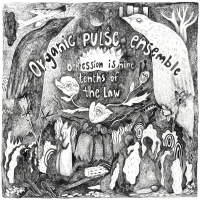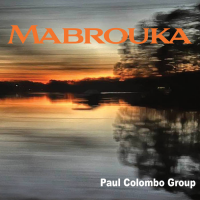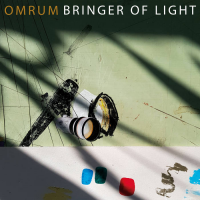Home » Jazz Articles » Extended Analysis » Grateful Dead: Grateful Dead: To Terrapin - Hartford '77
Grateful Dead: Grateful Dead: To Terrapin - Hartford '77
 Grateful Dead
Grateful Dead To Terrapin - Hartford '77
Grateful Dead/Rhino
2009
Well before the near 20-minute version of "Sugaree" included here is over, any thoughts of hype surrounding the Grateful Dead archive camp around this release has dissipated. The sense of direction and collective eye for detail that the band displays on the track permeates the whole of To Terrapin - Hartford '77.
Weaving in and out of the alternate vocal and instrumental improvisation sections on "Sugaree," one of guitarist/vocalist Jerry Garcia and lyricist Robert Hunter's most famous collaborations, illustrates how the Dead were at the absolute peak of their powers in the mid-to late 1970s. Rhythm guitarist Bob Weir never contributed more to the navigation of the group when jamming, and while keyboardist Keith Godchaux and spouse Donna Jean on vocals were to leave the group within a year, their subtle contributions add considerably to the sound of the core group: the piano is as bright as the harmonies.
Naturally, as always, Garcia's contribution is the benchmark of the level of Grateful Dead performance. His engagement is obvious in his vocal on the opener "Bertha," but no less so than when he solos in his inimitably relaxed manner on "Good Lovin.'" He takes notes at angles as he approaches and departs. And in contrast to his gallant but frail presence in the group's later years, he sounds the essence of strength, albeit a vulnerable one, in the slow-motion ballet that is "Row Jimmy."
The stars were all aligned in favor of the Dead at this point in their career, if only precariously. The self-imposed hiatus of two years prior had allowed them to streamline their approach and attitude, to devote their collective energy to their music rather than those pursuits indirectly related to it such as the (in)famous "wall of sound" system. As with the operation of their own record label, that natural outgrowth of devotion of impeccable audience audio had drained their resources financially and otherwise, as was eventually the case with The Grateful Dead Movie (at the time of this May 1977 concert days away from premiere).
But the group had reassimilated drummer Mickey Hart into the band, so that his partnership with founding percussionist Bill Kreutzmann was a tremendous asset on powerhouse rockers like "New Minglewood Blues." More significantly, the Dead had a clutch of new material to intersperse with the likes of "Wharf Rat" and "Playing In The Band," self-created standards since the beginning of the decade. Bassist Phil Lesh's "Passenger" is an aggressive rocker that plays off sharply with "Candyman" from American Beauty (Warner Bros., 1970) and "Brown Eyed Woman" from Europe '72 (Warner Bros., 1972). Weir's collaboration with his own wordsmith John Barlow was also peaking with the likes of "Estimated Prophet." The character depiction in the words is as vivid as the unusual time signature that offered such fodder for improvisation; here it's the first extended departure into deep space.
A reworking of the traditional "Samson and Delilah," spearheaded by Weir as his prominence grew on the frontline (prior to his predilection to oversing), matched the highs-spirits injected into the proceedings via Chuck Berry's "The Promised Land." In a live setting, "Terrapin Station," the centerpiece the studio album the group had been laboring over prior to this marathon tour of 26 shows, always came off superior to the recorded version. Without strings but complete with drum interlude excised from the take preserved on the album, Garcia's regal chord changes, navigated so gracefully by the whole group, gave life to Hunter's slightly precious lyrics and kept the story in its proper perspective.
It's a further tribute to the Dead's clarity of group mind at this time that a total of just less than thirteen minutes suffices to tell this tale. The discipline necessary in the studio informs the band's immersion in spontaneity, thereby preventing purposeless jams or miscues within any more structured pieces like "Tennessee Jed."
Jeffrey Norman ensures the clarity of Betty Cantor-Jackson's soundboard recording remains preserved and the entire May 28th performance is collected on three CDs packaged in eye-catching graphics that function almost like good animation: the more you look at it the more you see. Reading Gary Lambert's effusive liner notes could provoke some skepticism about what's to be heard within, but that disappears whenever (or wherever) you start listening.
Tracks: CD1: Bertha/Good Lovin/Sugaree; Jack Straw; Row Jimmy. CD2: New New Minglewood Blues; Candyman; Passenger; Brown Eyed Women; Promised Land; Samson And Delilah; Tennessee Jed. CD3:Estimated Prophet/Playing In the Band/Terrapin Station/ Drums/Not Fade Away/Wharf Rat/Playing In the Band; One More Saturday Night; U.S. Blues.
Personnel: Jerry Garcia: lead guitar, vocals; Bob Weir: rhythm guitar, vocals; Phil Lesh: bass guitar, vocals; Mikey Hart: drums; Bill Kreutzmann: drums; Donna Jean Godchaux: vocals; Keith Godchaux: keyboards.
Personnel
Grateful Dead
band / ensemble / orchestraAlbum information
Title: Grateful Dead: To Terrapin - Hartford '77 | Year Released: 2009 | Record Label: Unknown label
Tags
About Grateful Dead
Instrument: Band / ensemble / orchestra
PREVIOUS / NEXT
Support All About Jazz
 All About Jazz has been a pillar of jazz since 1995, championing it as an art form and, more importantly, supporting the musicians who make it. Our enduring commitment has made "AAJ" one of the most culturally important websites of its kind, read by hundreds of thousands of fans, musicians and industry figures every month.
All About Jazz has been a pillar of jazz since 1995, championing it as an art form and, more importantly, supporting the musicians who make it. Our enduring commitment has made "AAJ" one of the most culturally important websites of its kind, read by hundreds of thousands of fans, musicians and industry figures every month.




















